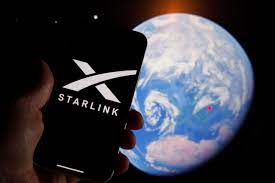SpaceX has confirmed that mobile phones will soon be able to connect directly to Starlink‘s satellites. According to a new advertisement page published by SpaceX, the “Starlink Direct to Cell” service is scheduled to be implemented between the years 2024 and 2025. Starlink will compete with established telecommunications companies such as MTN, Airtel and Globacom when it becomes available.
The ability to send and receive text messages (SMS) will become available in 2024, and the following year will see the introduction of voice and data capabilities. In addition, the page mentioned that an Internet of Things (IoT) service will be accessible in the year 2025. Until recently, customers of Starlink’s satellite internet service were obliged to purchase a hardware kit, which comes out to an amount equal to N299,0000 now. The cost of the subscription is 38,000 Nigerian naira each month.
Read also: Musk’s Starlink hits Nigeria and Kenya with Jumia
The impact Starlink will make
This breakthrough is interesting for a number of reasons, one of which is that the direct-to-cell service will be compatible with both 4G and 5G-enabled mobile devices. Because of this, we can immediately eliminate 2G and 3G phones from consideration. It is unclear whether Starlink will be able to exert significant competitive pressure on MTN and Glo in the absence of 2G and 3G phone customers, considering that Nigeria and the rest of Africa still have a sizeable population of people using 3G and 2G handsets.
SpaceX guarantees that users of LTE phones will have unlimited access wherever they go in the world. In spite of the fact that telecoms have had a hard time delivering on this promise, it will be fascinating to observe how Starlink intends to make it a reality.
According to the advertising page for SpaceX’s Starlink service, the satellite with the future capabilities will “have an advanced eNodeB modem onboard that acts like a cellphone tower in space, allowing network integration similar to a standard roaming partner.” This will make it feasible for Starlink to provide direct-to-cell service.
On the promotional page, it was also indicated that the new edition of the Starlink satellite internet service will take a proactive approach to addressing the problem of dead ones. This roughly translates into low connection in locations that are geographically isolated. Rural areas in Nigeria and many other African countries often do not have access to a reliable internet connection.
An article written by satellite communications expert Marcin Frackiewicz, provides evidence in support of the aforementioned assertion.
“The digital divide in Africa is largely a result of inadequate infrastructure, limited access to technology, and high costs of access. This has resulted in a significant gap between those who have access to the Internet and those who do not. This gap is particularly evident in rural areas, where access to the internet is limited or non-existent.”
How Starlink will attract patronage
Businesses in Nigeria need to establish prices that are appropriate for the country’s current economic situation to be successful. Starlink may eventually find its way into the mainstream, but its price is currently beyond what the average Nigerian can pay for it. As was stated previously, the purchasing power of Nigerians is decreasing on a daily basis. Why pay about N300,000 plus a monthly fee of N38,000 when the SIM cards of telecoms like MTN and Airtel sell for a substantially lesser price, if they don’t even cost anything at all?
It is possible that SpaceX will need to lower the retail price of Starlink’s hardware kit even further if it expects to be perceived as a major threat by the big four, which are MTN, GLO, 9mobile, and Airtel. SpaceX recently slashed the retail price of Starlink’s hardware kit in order to attract more buyers. If you do that, you should receive a positive response from potential customers.
















